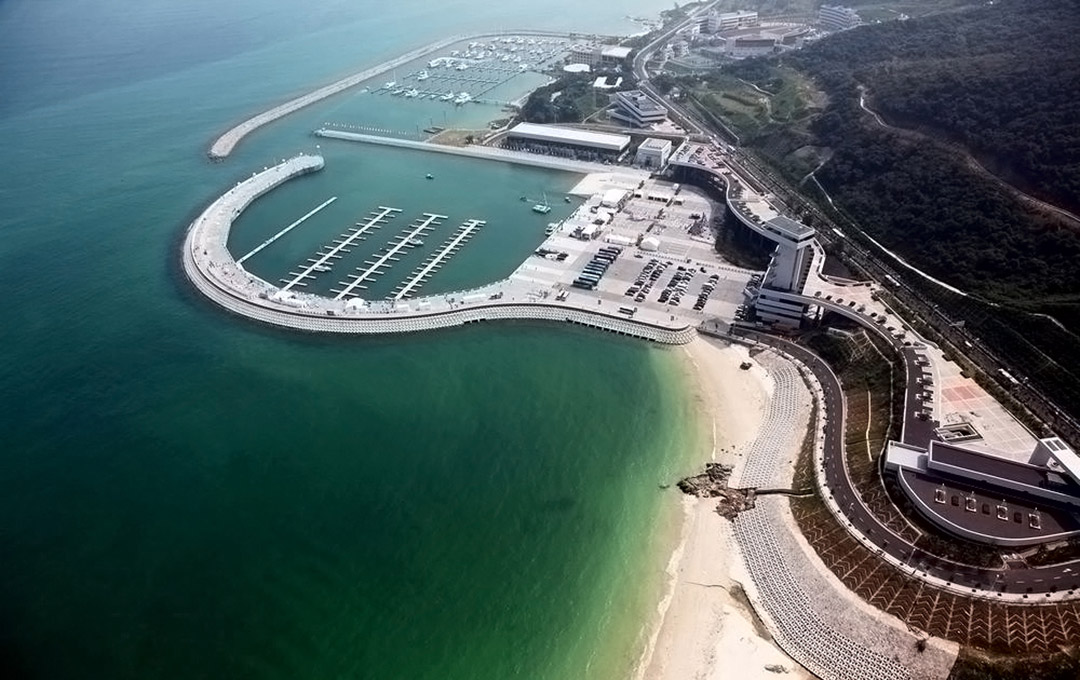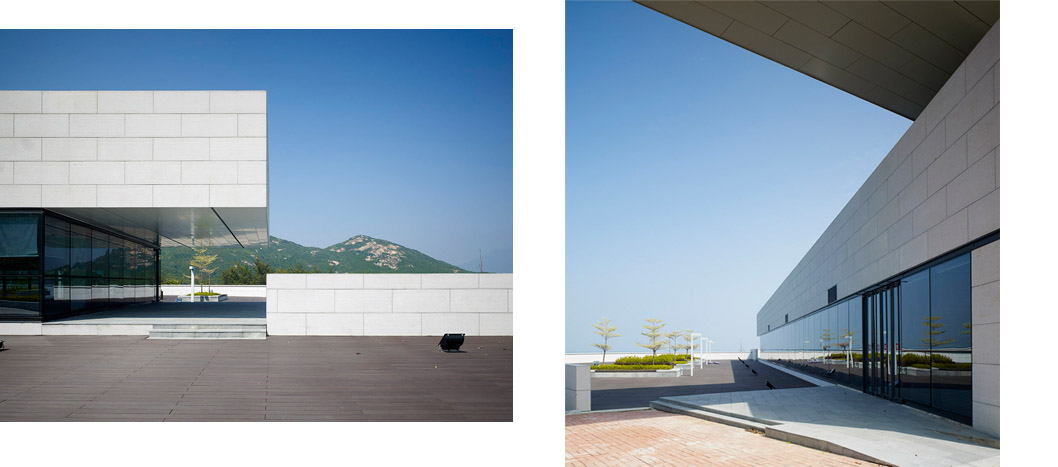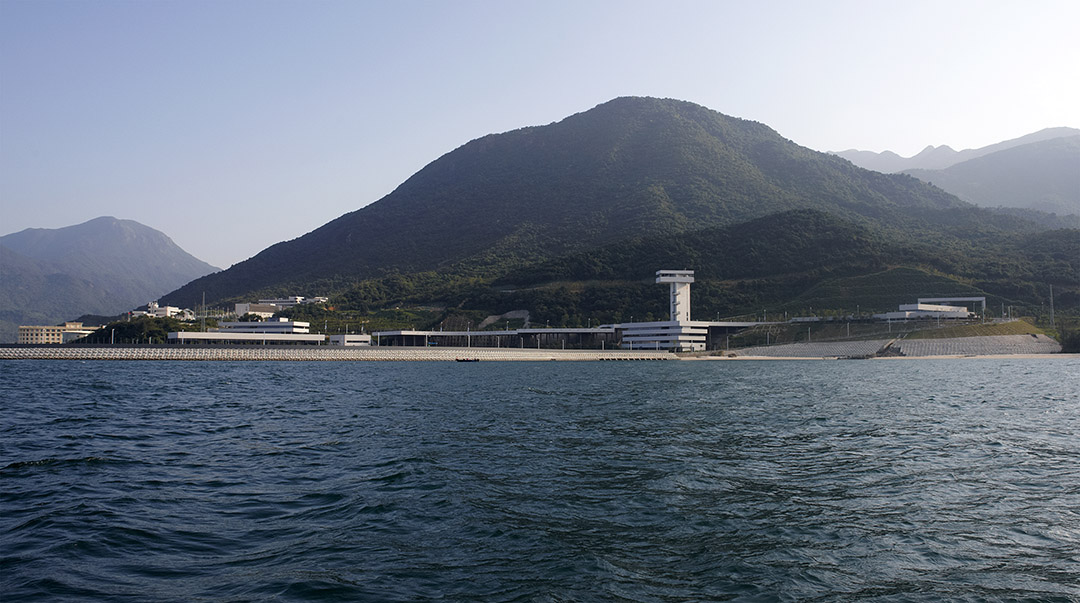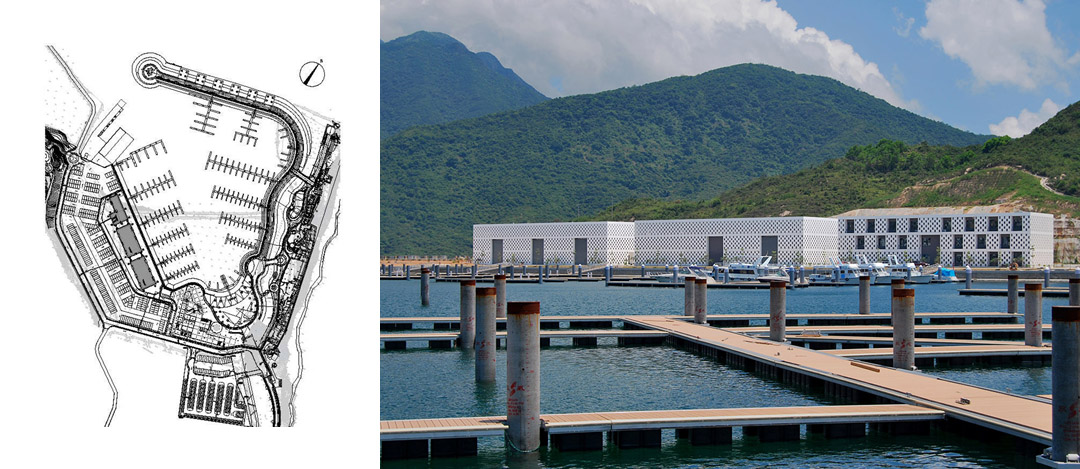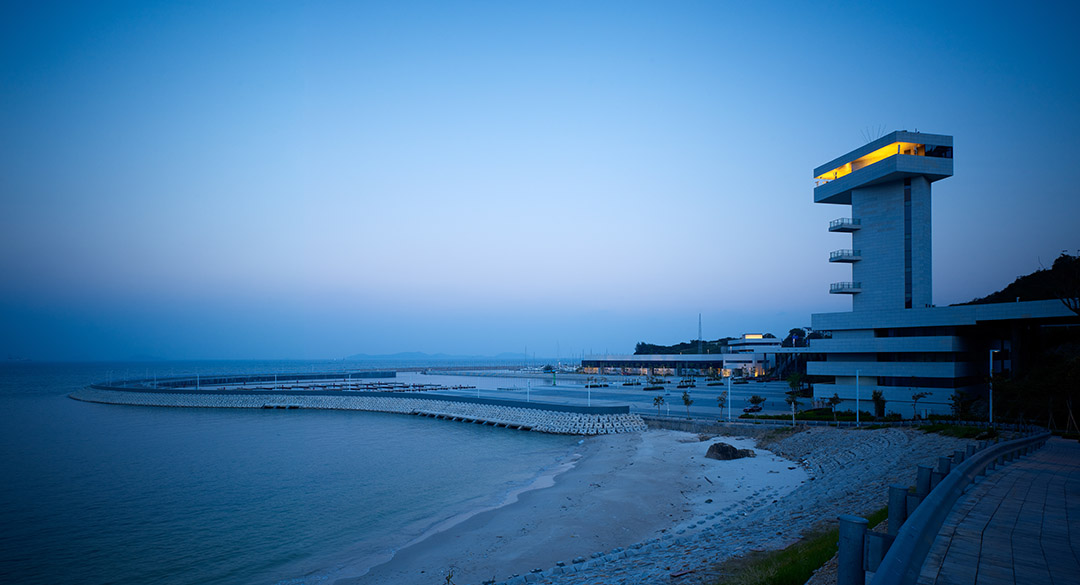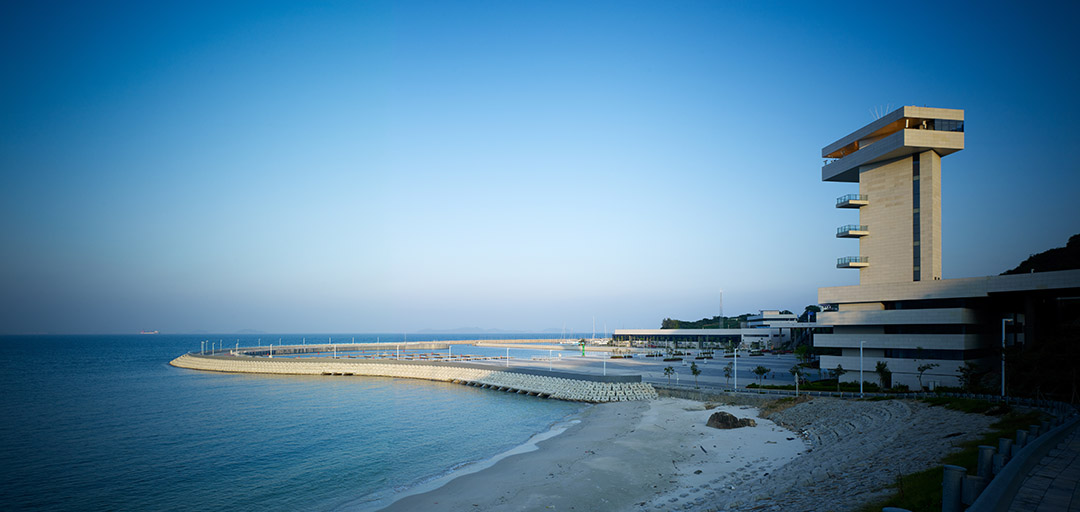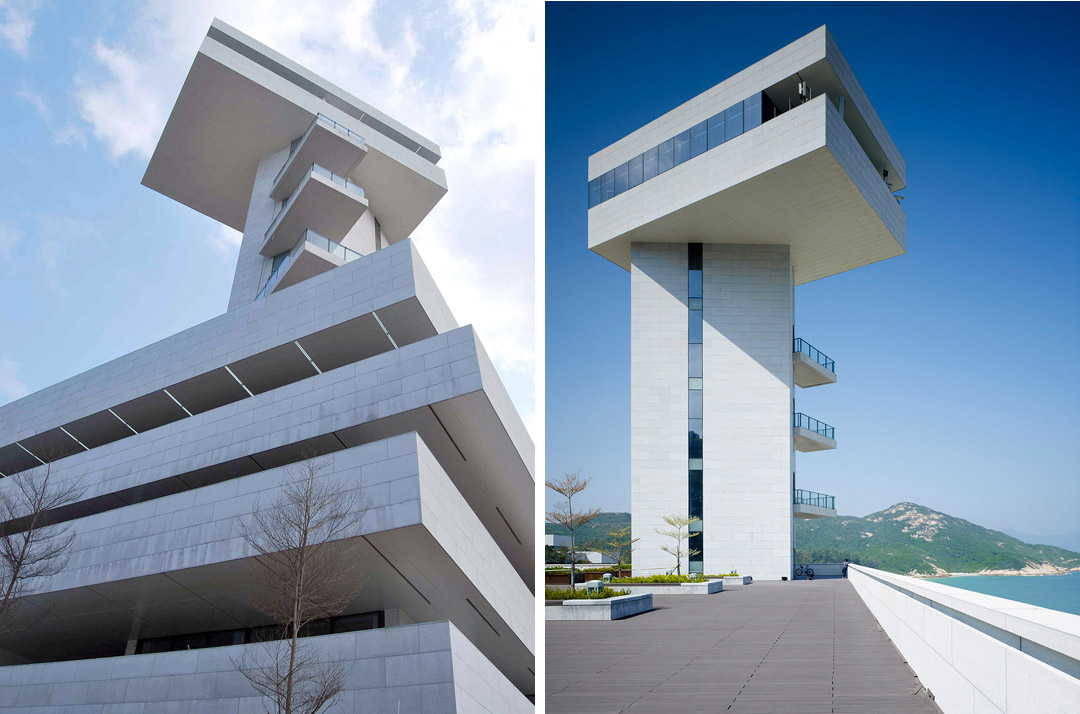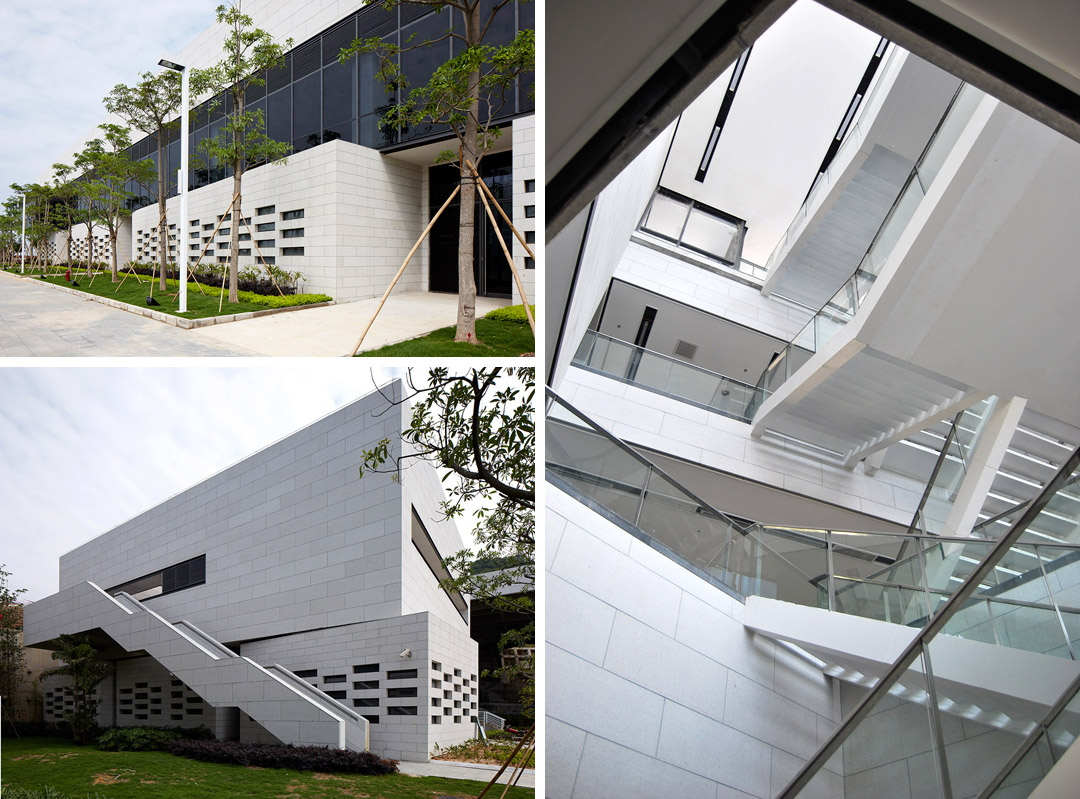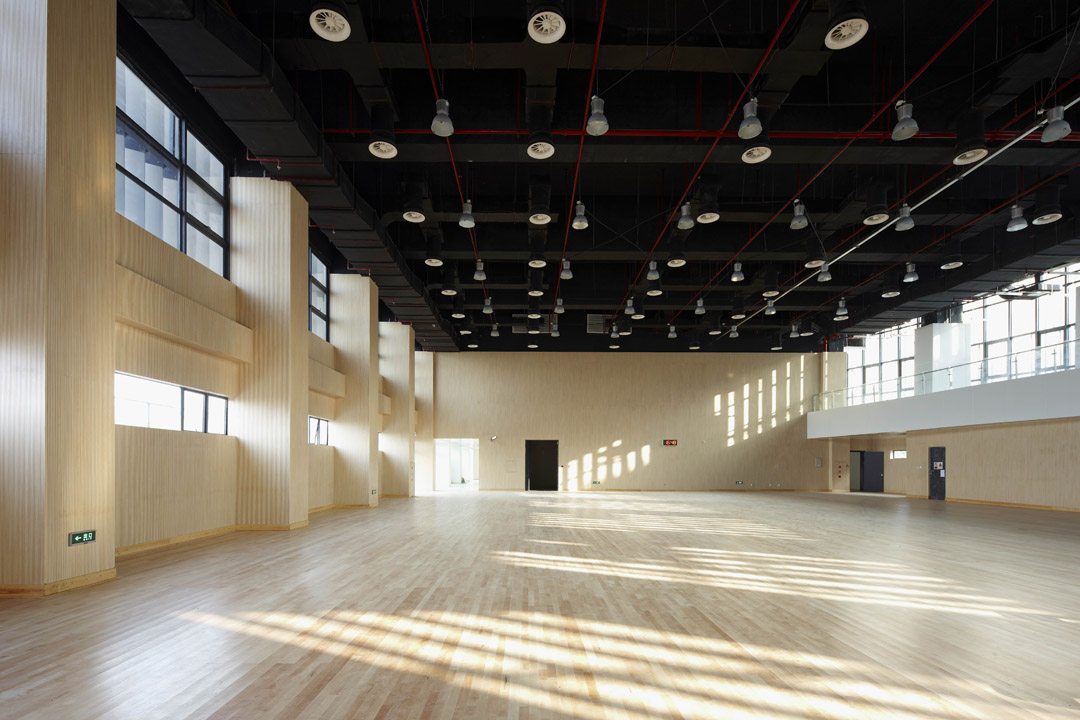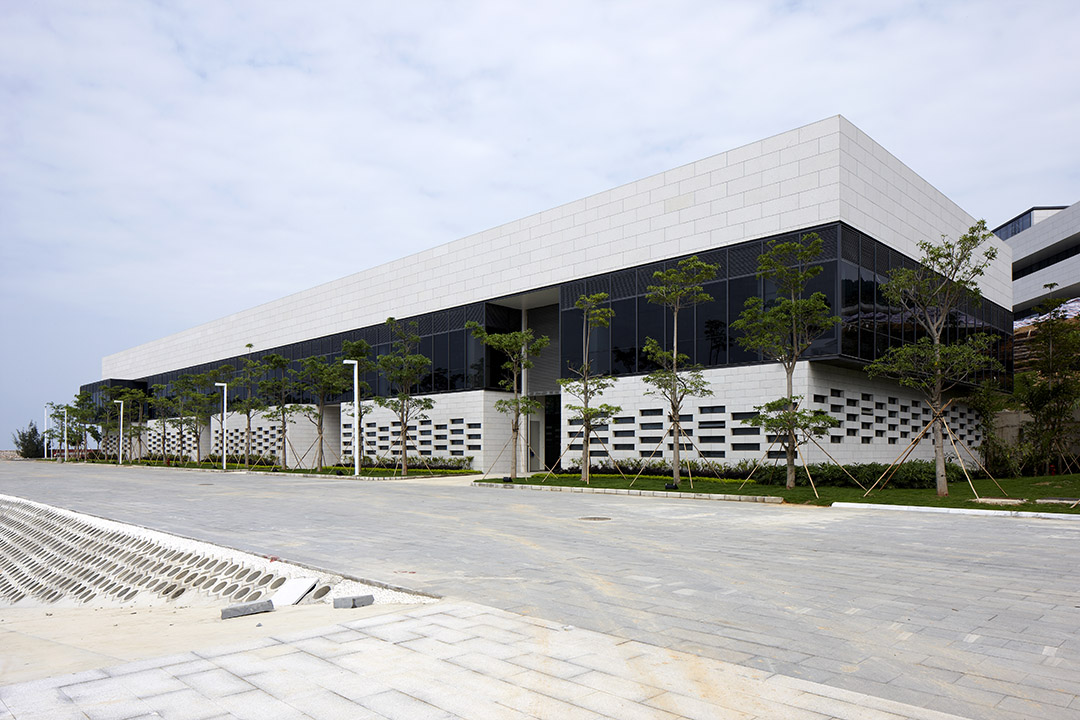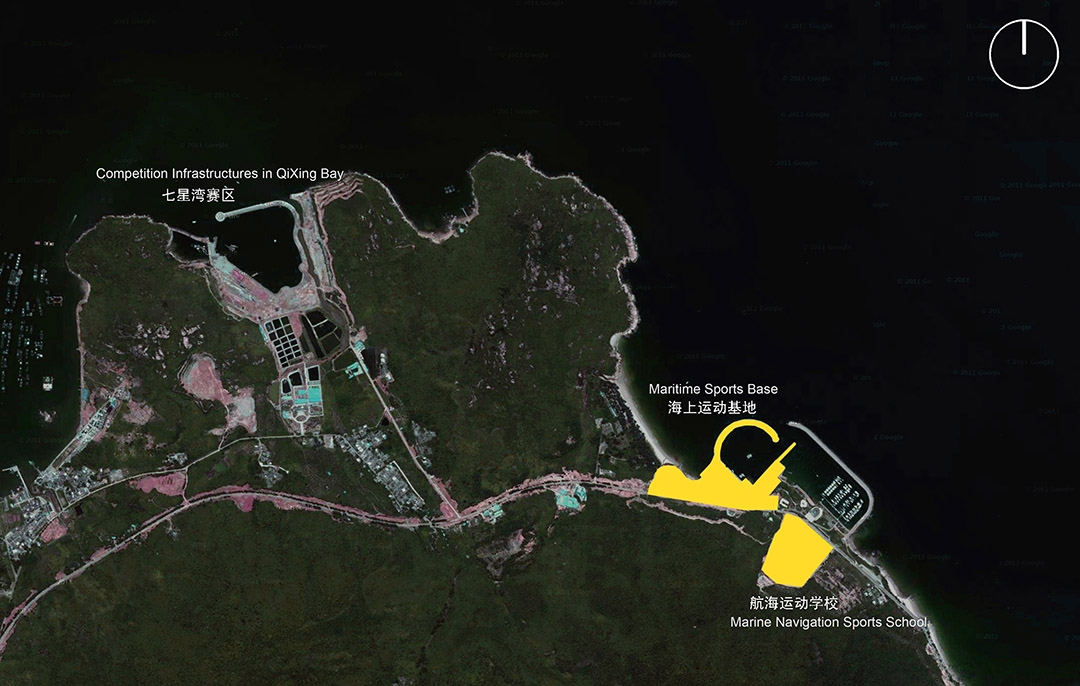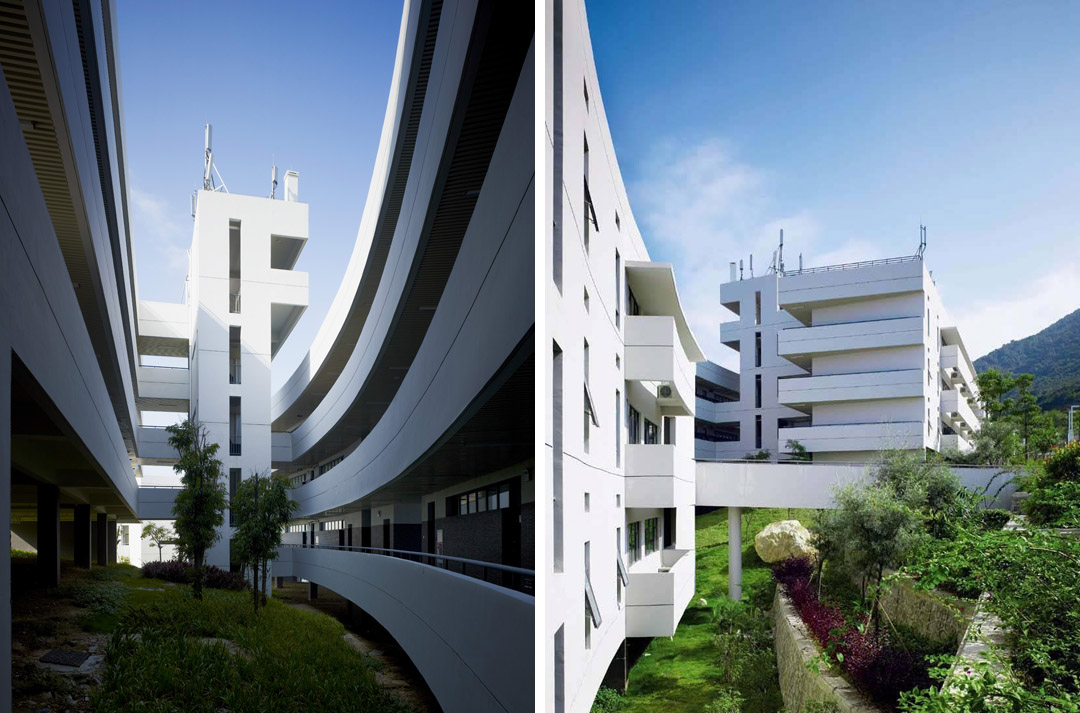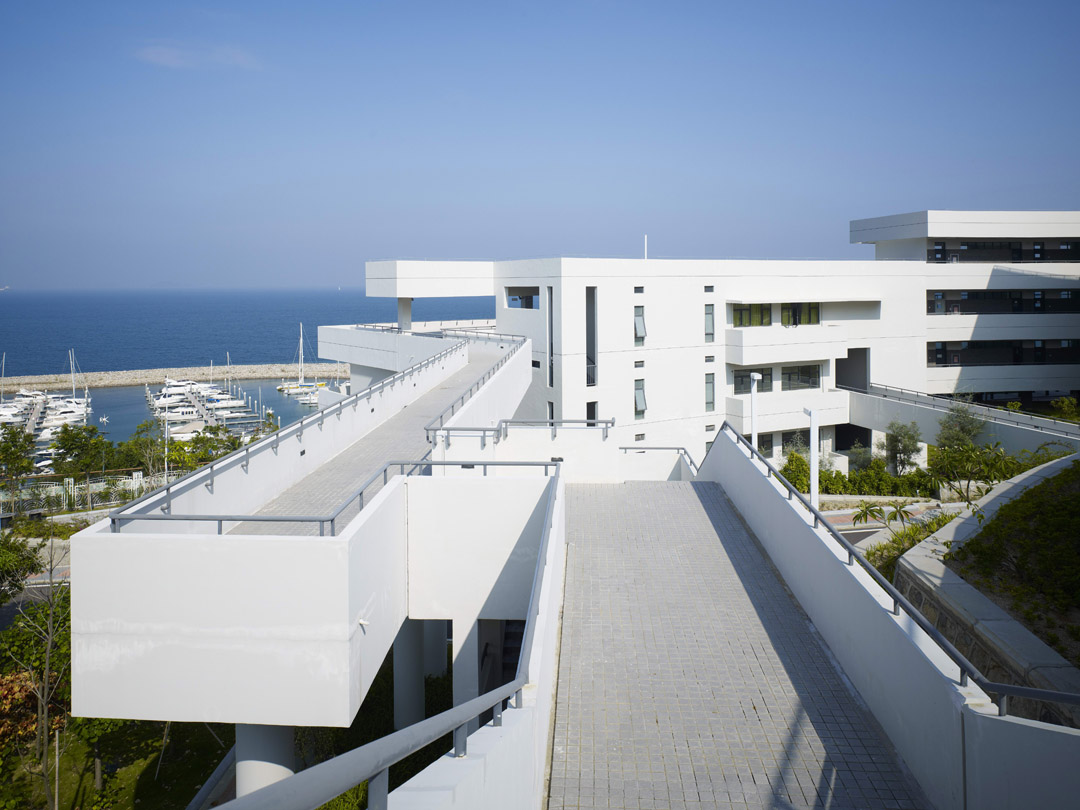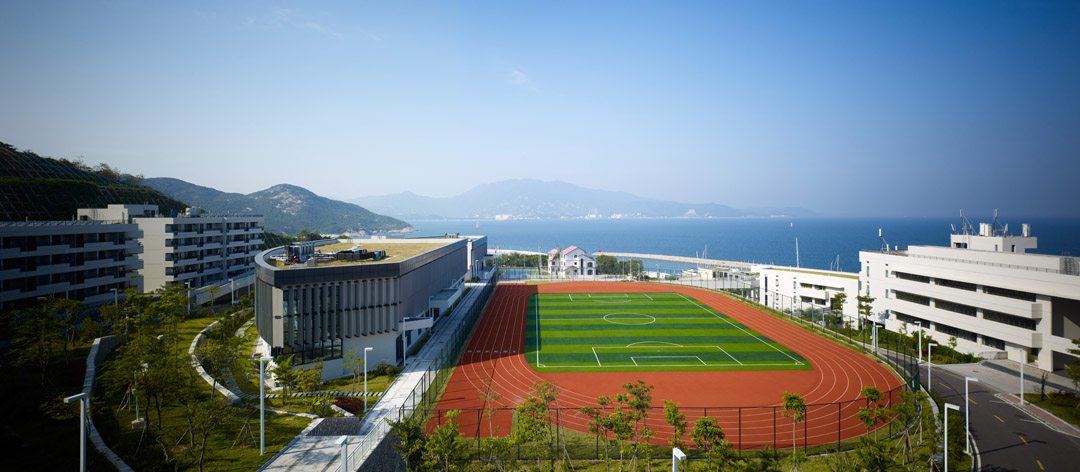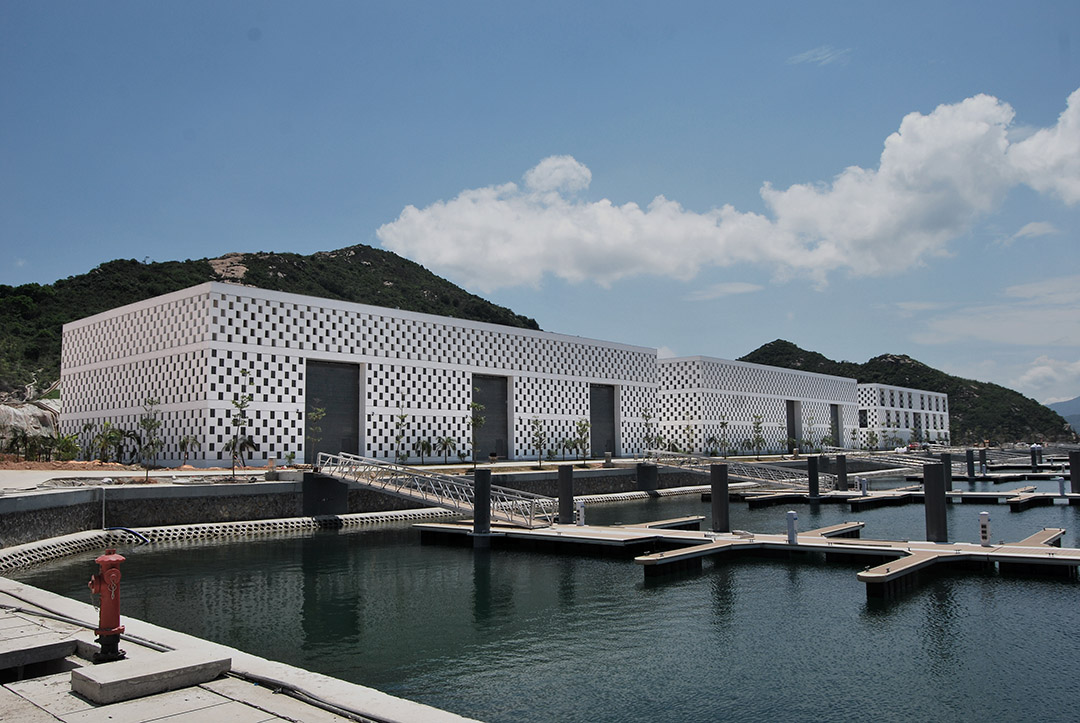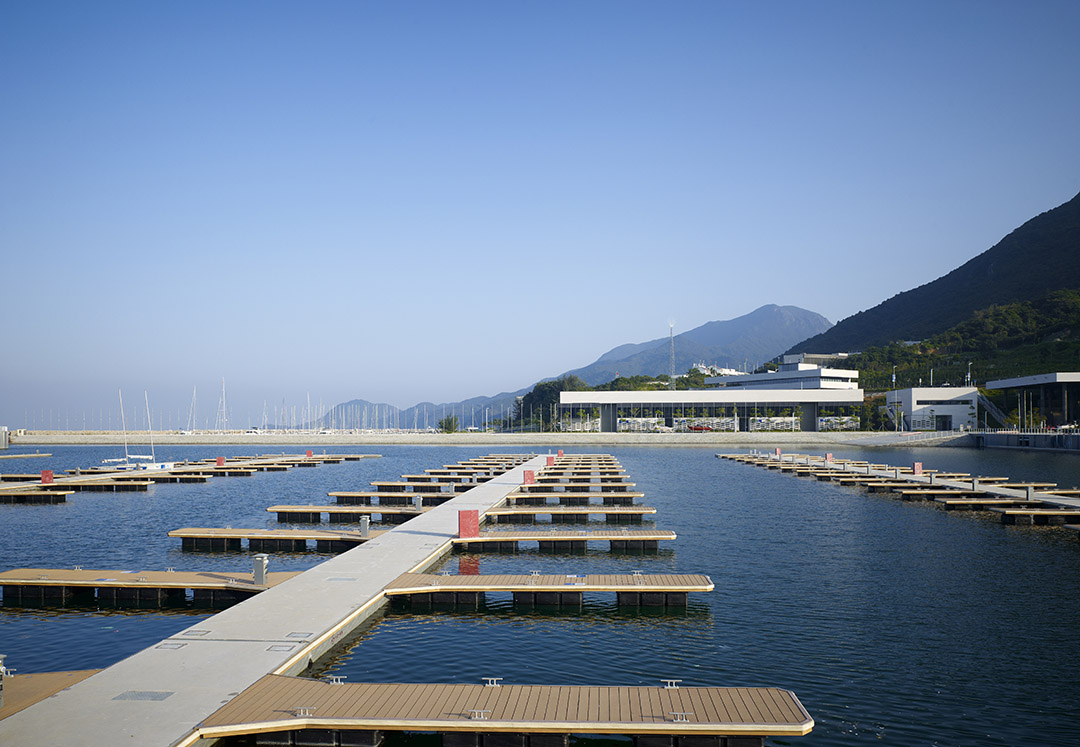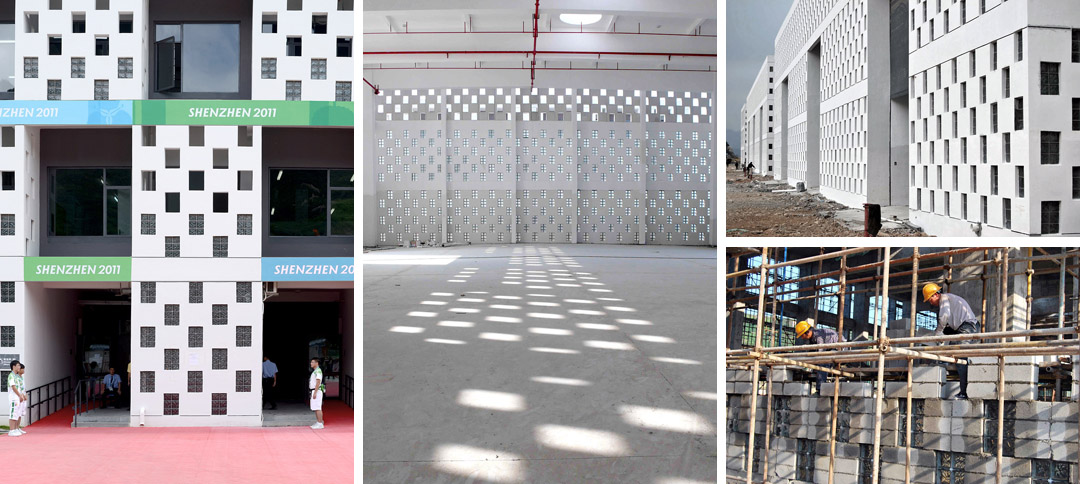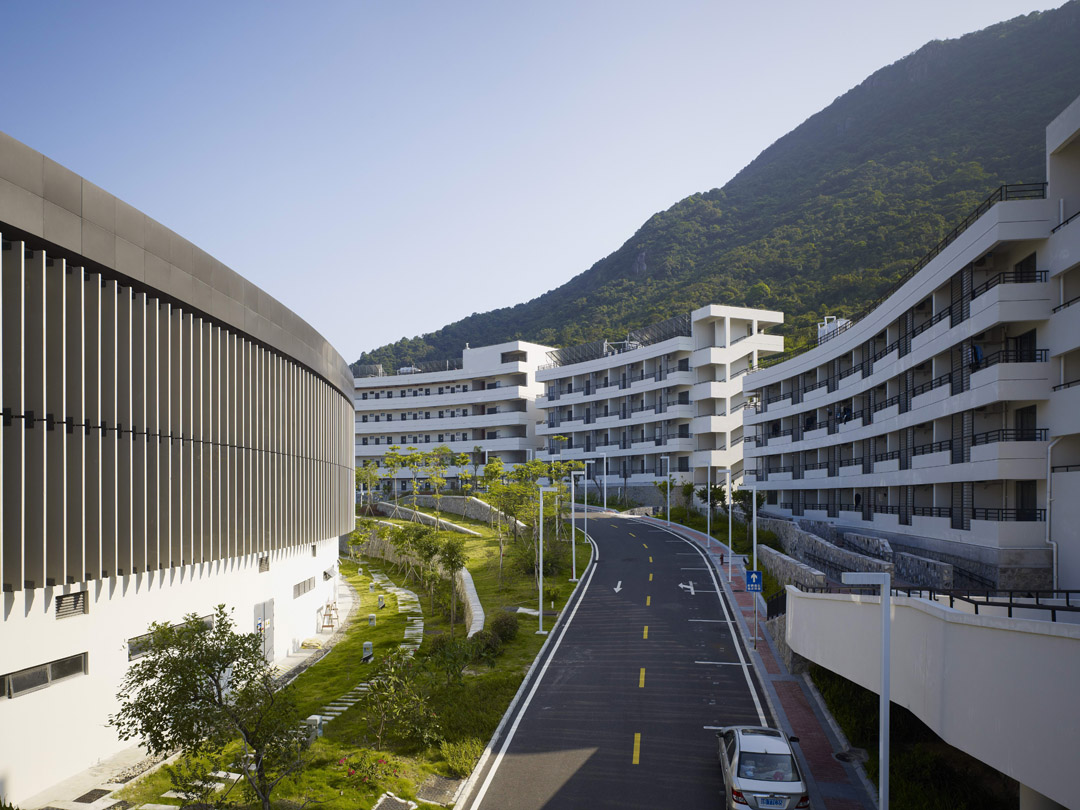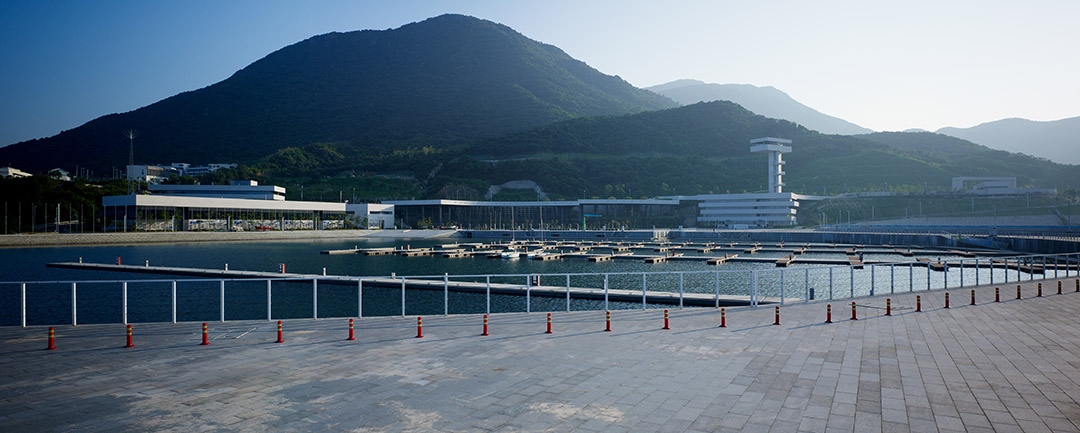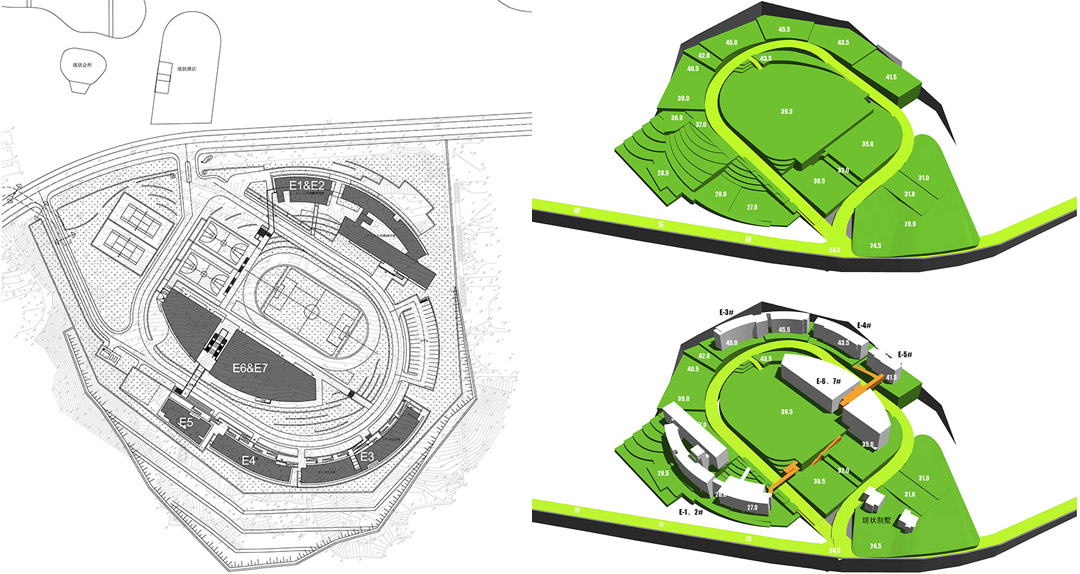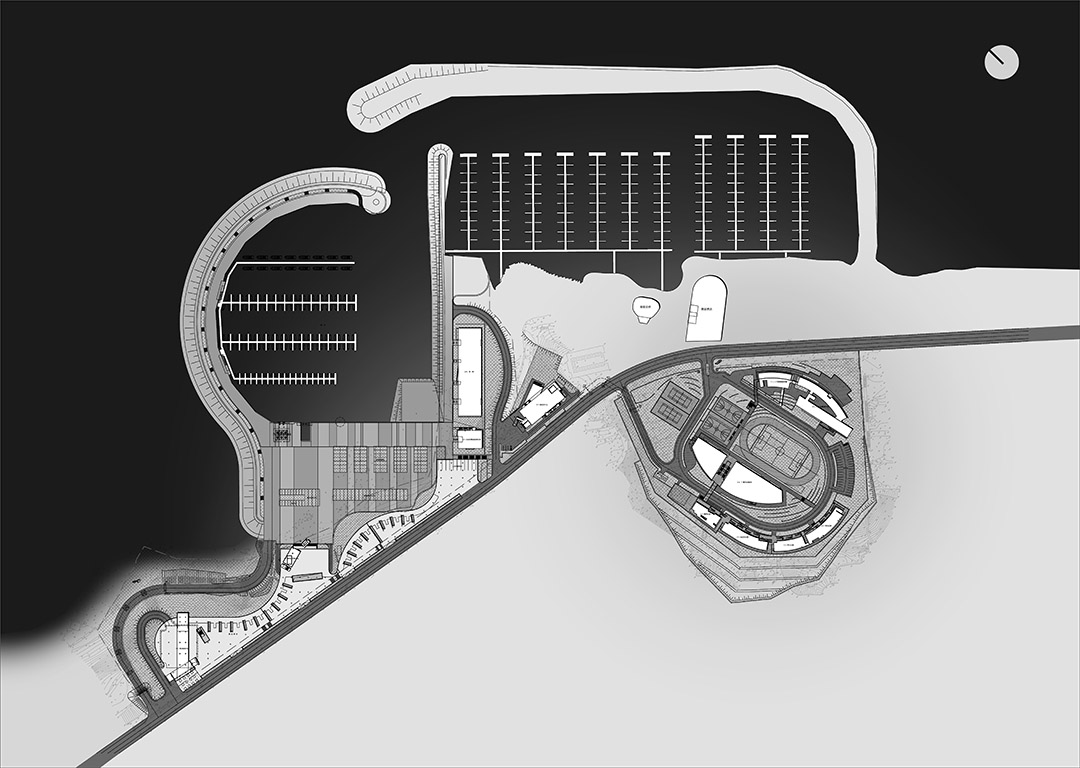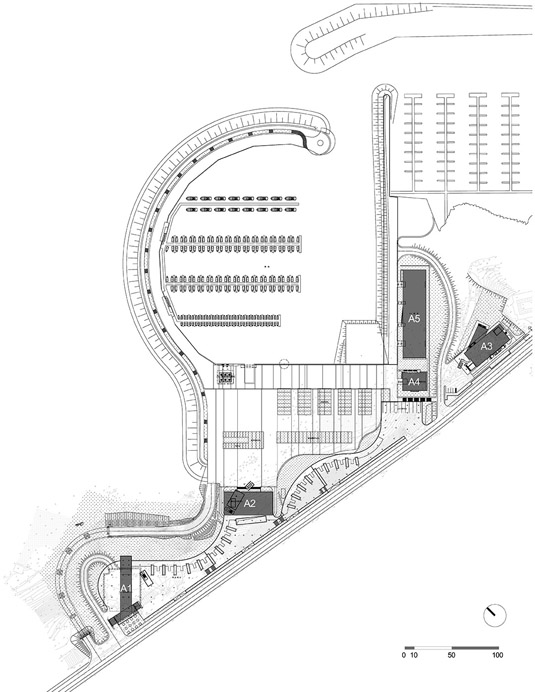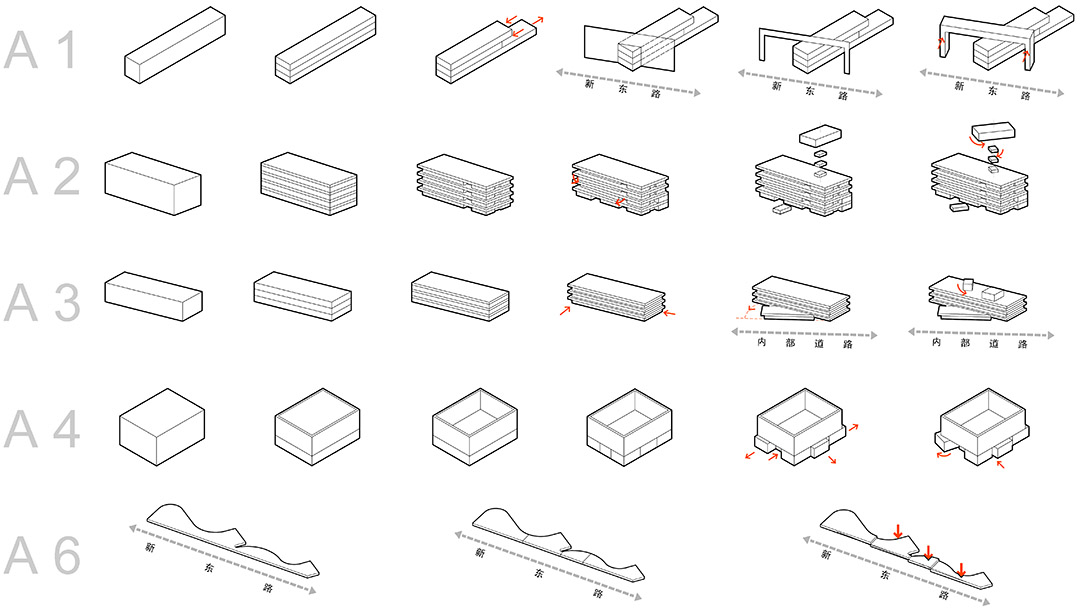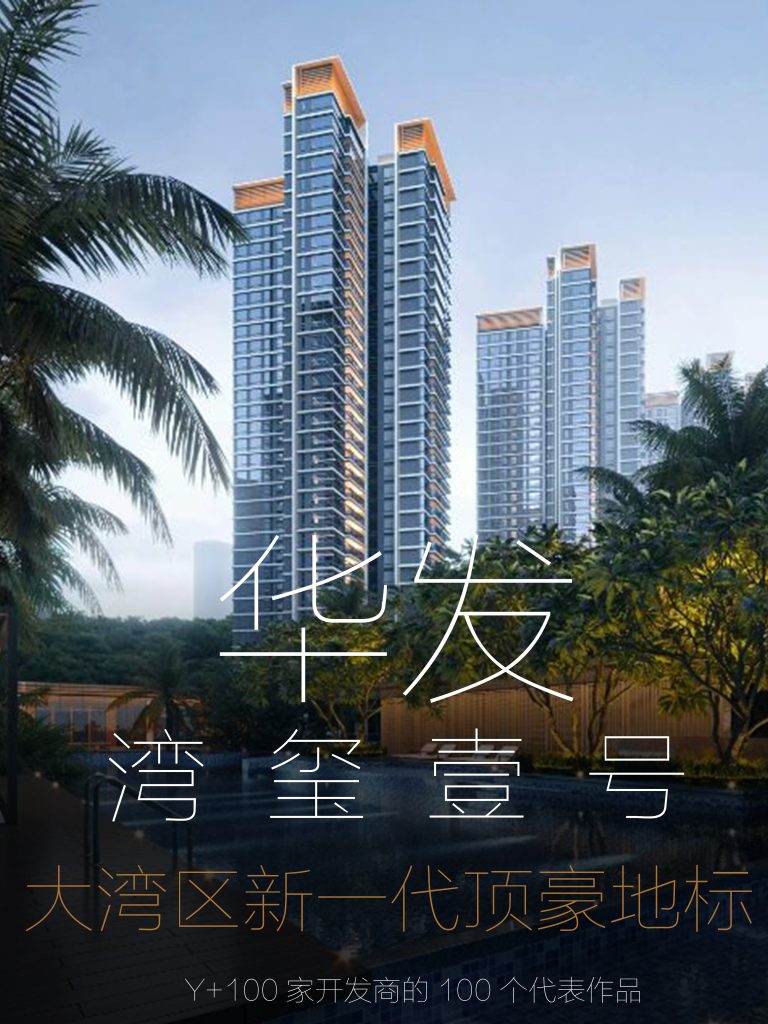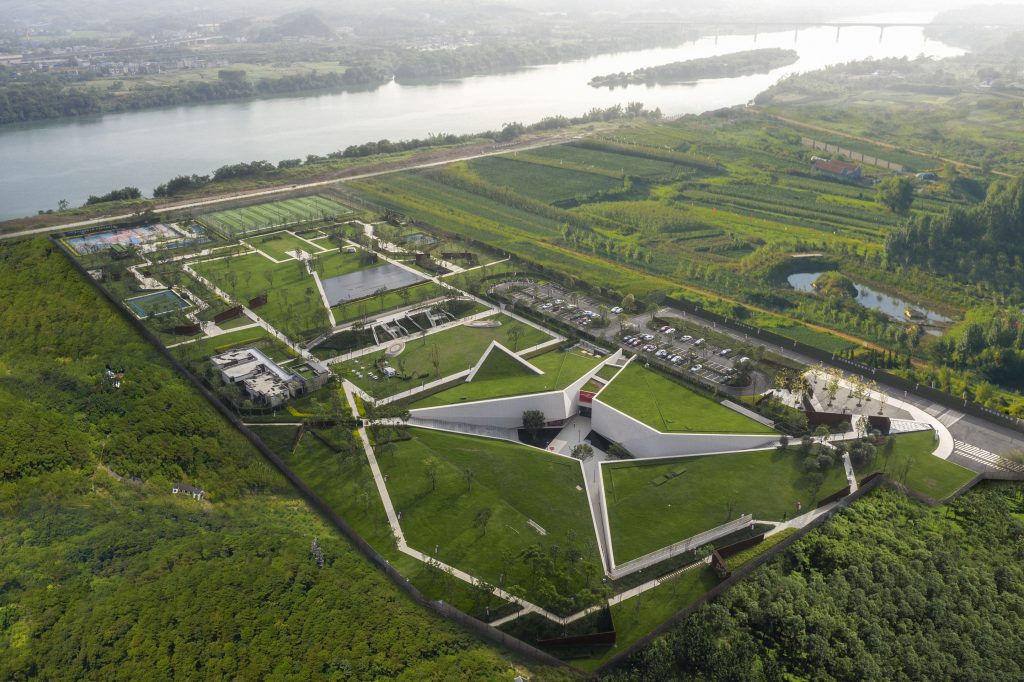深圳第26届世界大学生夏季运动会帆船、帆板比赛场馆及配套工程: 海上运动基地、航海运动学校以及七星湾分赛区比赛设施
SAILING AND SAILBOARD VENUES AND AUXILIARY CONSTRUCTIONS FOR 26TH WORLD UNIVERSITY GAMES IN
SHENZHEN: MARITIME SPORTS BASE, MARINE NAVIGATION SPORTS SCHOOL AND COMPETITION
INFRASTRUCTURES IN QIXING BAYa
设计团队:北京市建筑设计研究院有限公司(BIAD)2A2设计所 (网址:www.i-bplat.com)
建设地点:中国广东省深圳市龙岗区
建设规模:27,180.00平方米 年份:2011年
摄影:杨超英
作者:王瑞鹏、张昊(北京市建筑设计研究院有限公司 2A2设计所 建筑师)
Architects: 2A2 Design Department, Beijing Institute of Architectural Design, China (BIAD) (Website: www.i-bplat.com)
Project Location: LongGang District, ShenZhen, Guangdong Province, China
Area: 27,180.00sqm
Year: 2011
Photographs: Yang ChaoYing
Author: Wang RuiPeng, Zhang Hao (Architects of 2A2 Design Dept. of Beijing Institute of Architectural Design, China
(BIAD))
设计团队: 工程主持人:米俊仁、李大鹏 技术指导:聂向东、王小用 建筑专业负责人:王瑞鹏、武志军 结构专业负责人:卢清刚、李文峰 设备专业负责人:张杰 电气专业负责人:吴晓海
设计人员:张昊、解放、王绍利、宫新、李兴旺、刘沛、沈杰、王宏、陆文轩、廖宇、陈超
Design Team:
Architect In Charge: Mi JunRen, Li DaPeng
Technical Director: Nie XiangDong, Wang XiaoYong
Architecture: Wang RuiPeng, Wu ZhiJun Structure: Lu QingGang, Li WenFeng Equipment: Zhang Jie
Electrical: Wu XiaoHai
Designer: Zhang Hao, Xie Fang, Wang ShaoLi, Gong Xin, Li XingWang, Liu Pei, Shen Jie, Wang Hong, Lu WenXuan, Liao Yu,
Chen Chao
通过深圳第26届世界大学生运动会帆板比赛场馆“海上运动基地”的设计思考与实践历程,探讨在原生态环境中营建 契合场域特征、适应当代使用、具有可持续发展的专向建筑技术的设计方法;并结合赛会运营经验、同类项目的比较, 分析总结帆船、帆板比赛场馆的设计要点与经验。发掘并展望“海上运动基地”这一门类建筑设施对提升海滨城市亲 海旅游、休闲事业的深层意义、潜在价值与发展前景。
The design of the venue for Shenzhen 26th world university sailing competition, the “Marine sport base”, is a way of thinking and practice to explore site characteristics and find the method to adjust sustainable development in specialized architectural technology. Researching and comparing with the similar project, and summarizing the key points in designing sailing and windsurfing venues; exploring the potential value of tourism and leisure that this kind of architecture can bring to the coastal city.
2011年8月深圳成功举办了第26届世界大学生夏季运动会,国际大学生体育联合会主席加利安盛赞深圳大运会是 “不一样的精彩”,成为大运史上“最佳”的注脚。北京市建筑设计研究院2A2设计所参与了大运会帆船、帆板比赛场馆及配套设施工程的全程设计,并承担了设计总 承包工作。这是北京市建筑设计研究院继北京奥运会青岛帆船中心之后,又一次成功设计了国际大型运动会的帆船、 帆板比赛场馆。
In August 2011, we successfully held the 26th Summer World University Games in ShenZhen, the President of the International University Sports Federation, Claude Louis Gallien highly praised “it is extremely wonderful, which became the best one in the history of the World University Games.2A2 Design Dept. of Beijing Institute of Architectural Design participated in sailing, sailboard venues and auxiliary constructionsfor 26th World University Games, and undertook the general contract of design. This is another successful design for sailing, sailboard venues for International Sports Games that Beijing Institute of Architectural Design achieved, after we designed forQingdao Olympic Sailing Center in China.
大运会帆船、帆板比赛场馆及配套设施工程由三个项目组成,分别是帆板比赛场馆“海上运动基地”,帆船比赛 场馆“七星湾分赛区比赛设施工程”,赛事配套项目“航海运动学校”。“海上运动基地”与“航海运动学校”位于 深圳市龙岗区南澳街道桔钓沙片区,隔新东路南北比邻。“七星湾分赛区比赛设施工程”位于深圳龙岗区南澳街道东 山社区,与“海上运动基地”相距5分钟车程。三个项目的规模与功能简述如下:
The sailing, sailboard venues and auxiliary constructions is composed of three projects, these are “Maritime Sports Base” for sailboard venues, “Competition Infrastructures in QiXing Bay” for sailing tournament facilities, and “Marine Navigation Sports School” for auxiliary constructions. The “Maritime Sports Base” and “Marine Navigation Sports School” are located in Judiao Shapian Area, Nan’ao Town, Longgang District, Shenzhen, the Xindong Road divided it into Northern and Southern part. The”Competition Infrastructures QiXing Bay” is located in Dongshan Community, Nanao Town, Longgang District, Shenzhen, 5 minutes ride from “Maritime Sports Base”. The scale and the function of these three projects are as follows:
海上运动基地总用地面积3.79 hm2,陆域及防波堤用地2.22 hm2,港池掩 护水域4.58万㎡,基地场地按工艺流程及赛会需求共划分为七大功能区域,分 别为场馆运营区、体育竞赛区、运动员及随队官员区、场馆礼宾区、电视转播 区、新闻媒体区和观众活动区。总建筑面积10 480 m2,布置游艇泊位205个, 陆域干仓位70个,集装箱停泊位20个以及各类机动车停车位86个,其建设规模能满足各类国际国内帆船、帆板项目的比赛需求,能开展海上运动的日常训练 及教学培训工作,并面向大众普及和宣传帆船及航海运动,同时可促进深圳日 常东部旅游、休闲度假以及海上体育文化事业的蓬勃发展。
The total land area of “Maritime Sports Base” is 3.79 hm2, while theland-based area and breakwater area is 2.22 hm2, and basin area is45800 m2, the base area is divided into seven functional areas according to the technological process and the requirements of the Games, these are venue operation area, sports competition area, athletes and team officials area, venue concierge area, TVbroadcasting area, media area and audience activity area. Total construction area is10480 m2, parking lot for 205 yachts, 70 land shipping spaces, 20 container ports and 86 parking spaces for all kinds of vehicle, its construction scale can meet requirements for all kinds of domestic and international sailing and sailboard events, can carry out sea sports’ daily training and teaching, and popularize and propagate sail and sailing knowledge to the public, at the same time can promote the local tourism, vacation tourism,
and the vigorous development to the sea sports cultural industry.
“弱化建筑”,放低建筑形式中的人工姿态,摒弃纯形式的语言。同时削弱建筑单体的特异性,以简单的形式逻辑统 一散落的建筑单体,化零为整;突出建筑的群落关系,使建筑单体消匿于整体环境之中。
“Weaken the influence of architecture”, lower the artificial position in architectural forms and abandon the pure-form language. Meanwhile, weaken the peculiarity of single building to unify the scattered architectural monomer by simple logic andgather parts into a whole; protrude community relations of buildings, so that the architectural monomer is hidden in the overallenvironment.
“科学排布”,通过对场地的深入剖析,结合工艺要求将建筑群落有序的排布于自然肌体之内。建筑单体因地制宜, 充分契合周边地形、地势与现状环境,从而自然展露出错落有致,纵横有别的建筑形象。最后结合建筑体量与功能特点,巧妙地排布各单体建筑,使整组建筑有机完美地融入山峦背景 与海天轮廓之中。
“Make a scientific arrangement”, on the basis of in-depth site analysis and in terms of the technological requirements, orderly configurate building group in the nature. According to local conditions, the architectural monomer is fully fit the surroundingterrain and the environment, thus naturally showing the well-proportioned architectural image which is distinct both vertically and horizontally. Finally, in combining with the size and functional features of the constructions, cleverly arrange each single building so that the entire architectural group organically and perfectly blends into the background of mountains, sea and sky silhouette.
“慎用人文”,在这块全生态的处女地上,如果契入一组捆绑了沉重“文化”包袱的建筑,那犹如投掷了一颗人文炸 弹,将彻底摧毁基地所蕴含的那亘古未变的野性。所以应弱化建筑复杂、多重的文化象征意义,采用简单、朴素、抽 象的几何形态或许更能融洽的与自然对话。我们以舒展的曲线来表达大海的柔美与空灵,坚朗的几何体块去呼应山川、 礁岩的雄浑与坚忍,也许足够了。
“Use humanity with caution”. On such fully ecological and virgin land, if a group of buildings with heavy “culture” are evolved, theywill destroy eternal wildness of such land like a humanity bomb. Thus, efforts should be made to weaken complicated and multiple cultural symbolic meaning of buildings, but take simple and abstract geometric shape so as to respond to nature coordinately. We use stretching curve to express softness and spirit of the sea, and strong geometry to respond to force and perseverance of mountains and rocks which are enough for us.
“简单、恰当、自由”——对建筑空间和形式逻辑的解读我们限定以简单的“矩形盒子与水平条板”作为构成元素,在限定的建筑模数与尺度控制下,通过扭转、挪移这两 种变异的手法去演绎空间与形式的自由趣味。同时,基于各项功能行为学的分析,将满铺塑木的上人屋面、深远宽大的露台、面朝大海方向通透的玻璃界面等具体策略物化了这些“盒子与条板”,深化了空间与形式进一步的思考与探究。
“Simplicity, propriety and freedom” —-explanation to architecture space and formal logicWe entitle simple “rectangle box and horizontal batten ” as composed elements, and display interesting freedom of space and form subject through reversing and moving those two variable techniques under the control of limited architecture modules and measures. Meanwhile, based on the analysis of various functional ethnology, materialize those “box and batten” through roof garden overspread with plastic & wood composite, large and wide terrace, transparent glass screen towards sea to deepen the further consideration and research of space and form.
“四新四节”——对可持续发展的回应 “节能减排和可持续发展”是建设“环境友好型和资源节约型社会”的战略规划,建筑“四新”、“四节”技术的推广应用亦是对可持续发展观的积极回应,本项目经过缜密策划,切实采用了一些新技术、新材料与节能环保措施。“Four Innovations and Four Saving Measures”- the response of sustainable development “Energy conservation and sustainabledevelopment” is the strategic planning for the development of “environment-friendly and resource-conserving society” and the promotion and application of “Four Innovations and Four Saving Measures” construction technology is also the positive response of sustainable development. After careful planning, the project effectively uses some new technologies, new materialsand energy-saving measures.
“四新”:水工专业采用了国内首次自主设计的大体积钢筋混凝土浮码头(薄壁高性能混凝土浮体)技术,相比普通 钢结构浮码头具有抗风浪能力强、稳定性好、无污染、造价低等优点,并使港池融入岸区,消除视线遮挡;岩土专业 采用了排架桩抗滑技术(排架桩前后排桩通过连扳连接,提高了整体刚度及抗滑能力)与桩板墙技术(嵌固段采用圆 桩,自由端采用方桩,上下通过联系梁转换桩型,能提高施工速度和安全度)。
Four innovations:
Since in hydraulic aspect we use the first self-designed large-volume reinforced concrete pontoon (thin-walled
high-performance concrete floating body) technology in China, compared to ordinary steel floating dock, the dock has advantages of strong ability of resisting wind and waves, good stability, non pollution and low cost, and also eliminating blocksfrom sight by integrating dock basin into the shore area; in geotechnical aspect we use bent pile anti-slide technology (the front and back row of bent pile are connected by connecting plate to improve the overall stiffness and skid resistance) andslab-pile wall technology (the built-in part uses a round pile and the free end a square one, transforming pile type up and downthrough contacting beam to improve the speed and safety).
“四节”:设备专业采用太阳能集热及空气源热泵联合供热措施;电气专业采用了数字调光、高低压回路电力监控等 技术,在节能、节电方面都有不错的表现。项目还大量使用绿色环保型建材,如透水砖、生态塑木板、铝蜂窝板等, 达到了节材降耗的目的。
Four Saving Measures:
As to equipment, we use solar collection and air source heat pump combined heating measures; In electricity, we use digitaldimming and high and low voltage power loop monitoring technology to have good performance in energy-saving, electricity-saving aspects. The project also extensively uses environment friendly building materials, such as permeable bricks,eco plastic wood, aluminum honeycomb panels to achieve the purpose of material-saving and energy consumption reduction.
“航海运动学校”位于深圳市龙岗区南澳街道桔钓沙片区,隔新东路南北比邻。是大运会帆船、帆板比赛项目的重 要配套及赛后运营保障设施。学校总用地面积4.39公顷,按功能构成分为10栋建筑,总建筑面积16700m2。设计全日制 初中部和高中部共6个年级,每年级2个班,约50人。在校学生约300人。另有在校教职员工50人。学校设施同时可提供100名海上运动员及20名教练员常年集训使用。航海运动学校赛时可转换为大运会运动员配套服务设施,结合七星湾分 赛区共担负3000人的赛事接待任务。
“Marine Navigation Sports School” is located in Judiao Shapian Area, Nan’ao Town, Longgang District, Shenzhen, the Xindong Road divided it into Northern and Southern part. It is one of the important auxiliary constructions for the sailing and sailboardevent of the Games and will be the operation supporting facility after the Games. The school has a total land area of 4.39 hectares, which divided into 10 buildings according to function, with a total construction area 16700 m2. A full-time education is for middle school and high school, total 6 grades, 2 classes for each grade, about 50 people, total we have 300 studentsstudying in the school. And we have 50 school staffs. 100 athletes and 20 coaches can use school facilities for the coachingsession at the same time in the entire year. During the Games the “Marine Navigation School” can be converted to supportingfacilities for the athletes, combined with QiXing Bay, it can receipt 3000 people during the event
规划:将用地分为教学区、训练区和生活区三部分,各部分处于不同高度的台地上。教学区、生活区沿用地环型 展开,依次抬高,面海背山呈怀抱状,训练区置于用地腹部,通过南北贯通的廊桥与教学、生活区紧密联系。训练区 与运动场相对排列,结合地形构成园区内重要视觉通廊,为学校最大限度的争取了优质景观资源。弧形的布局也与西 侧“海上运动基地”的矩形母题产生对比。
Planning: the land is divided into teaching area, training area and living area these three parts, each part is standing on differentlevel of the ground. In teaching area and living area it makes a circle development along the site, lifts up the level gradually, the site is at the foot of the mountain and hold the sea in the arms, the training area is located in the center of the site, closelylinked the teaching and living area through the corridor in north south direction. Training area and the sports fields stand opposite, combined with the terrain condition it becomes an important visual corridor, to maximize striving a high quality landscaperesources. Its curve layout is responding the rectangular layout of the “Maritime Sports Base” on the west.
建筑:方案结合地形,采用易于通风的建筑形式,如形体错落,设置外廊等;在满足采光要求的前提下尽量遮蔽 阳光,采用遮阳设施及屋顶绿化等手段;建筑材料采用不易腐蚀的涂料为主,同时节约了造价;立面由于外廊或遮阳 挑板的存在,形成了横线条的连续形式,增加了场所的整体感及标志性。
Architecture: considering the terrain, we adopt the ventilated architectural forms, such as in picturesque disorder, setting side corridor etc; and adopt shading facilities and roof greening method to block the sunshine as far as possible in the prerequisite to meet the lighting requirements; take corrosion-resistance coating as the main building material, which saves the cost; due to the side corridor and sun shield, the fa?ade formed a continuous horizontal lines, increase the overall sense of associativeperception and landmark.
“七星湾分赛区比赛设施工程”是深圳第二十六届世界大学生夏季运动会帆船比赛项目的赛会设施,位于深圳市 龙岗区南澳街道东山社区,与帆板比赛场馆“海上运动基地”共同承担大运会海上比赛项目。该项目共包括七星湾分赛区指挥中心、测量大厅以及船库三栋建筑,总建筑面积6 143.7 m2。工程受投资概算控 制,建筑综合单方造价仅2 200?3 000元/m2(包含体育工艺智能化系统),那么如何在低造价控制、限额设计的前提下营造出恰当、适宜且富有魅力的建筑形式是设计所面临的挑战。
Located in Dongshan Community, Nan’ao Town, Longgang District, Shenzhen City, the Competition Infrastructures in QiXing Bay is the sailing tournament facilities of the 26th World University Games in Shenzhen, undertaking Universiade maritime events withthe sailboard venues.The project comprises three constructions: the command center of Qixing Bay, measurement hall and boathouse, with the overall floorage 6143.7 square meters. Due to the investment budget for the project, the comprehensive unilateral cost of the constructionis only 2200 ~ 3000 yuan / square meter (including sports craft intellectualized systems), so how to create a suitable, proper and attractive architectural form in the situation of low cost control and quota design is the challenge that we are facing.
对此时此地的形式解读 建筑处在人工填造的陆域岸堤上,相比陆域场地,建筑尺度过于弱小。于是设计从整体入手,化零为整,将三栋单体 建筑的体量、形制、色彩统一,整合成一组尺度适宜的纯白几何体块,在绿树山影、蓝天碧波的背景中透射出睿智与 坚定的建筑格调。
Interpretation for the present form here
In contrast to land sites, the constructions located on the artificial land bunding have excessively small architectural scale.Therefore, starting from the wholeness and gathering parts into a whole, the design unifies the size, shape, structure and color ofthree single building to integrate them into a group of appropriately-sized pure white geometry block, conveying wise and firm architectural style in the background of green trees, the shadow of mountains, blue sky and bluish waves.
低造价营造策略 建筑运用最基本的结构单元“混凝土空心砌块”作为围护结构的创作素材,搭配少量廉价的玻璃空心砖,通过“模数” 将这些元素按简单的逻辑编排组合,演绎出虚实相间的“数字波浪”表皮效果。廉价的材料、简单的工艺、合理的构
Low-cost construction strategy
Adopting the most basic structural unit “concrete hollow block” as the creative material of envelope structure, combined with a few of inexpensive glass hollow brick, the constructions arrange and combine these elements by simple logic through “modulus”,achieving “digital wave” effect which can be interpreted as either illusion or reality. Inexpensive materials, simple crafts, reasonable structure and flexible form embody the consideration of building low-cost constructions.
项目来源: 2A2
